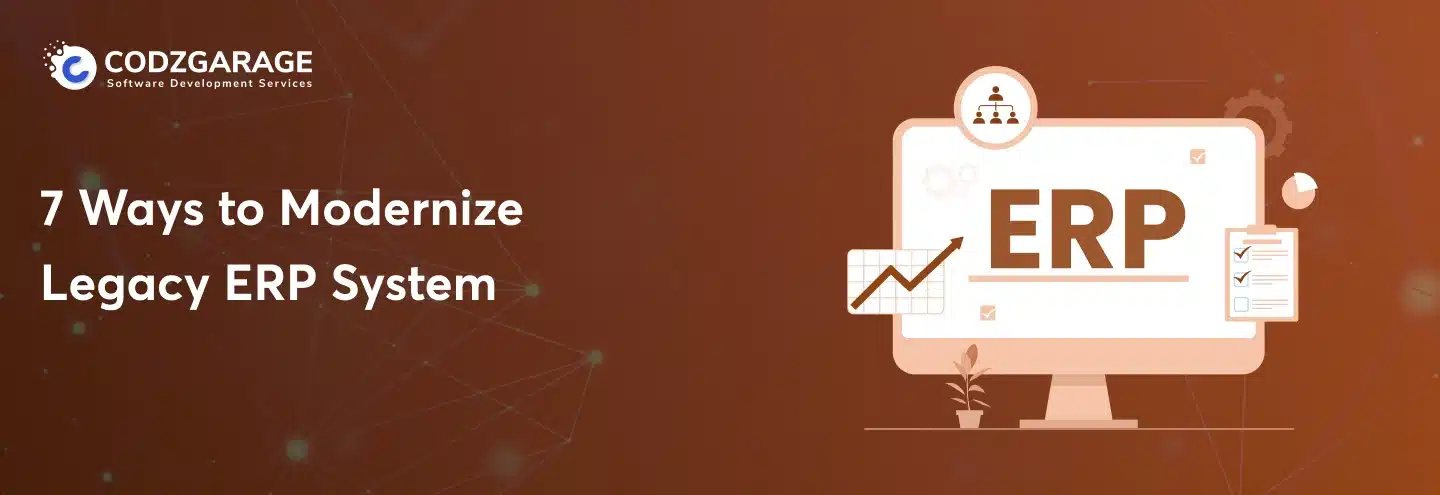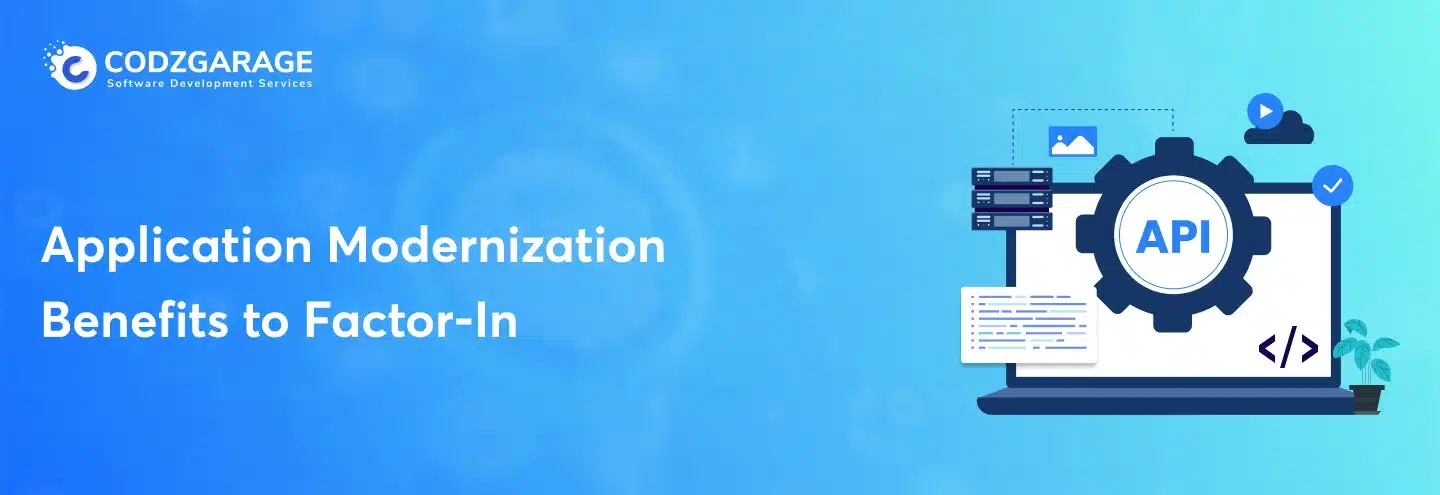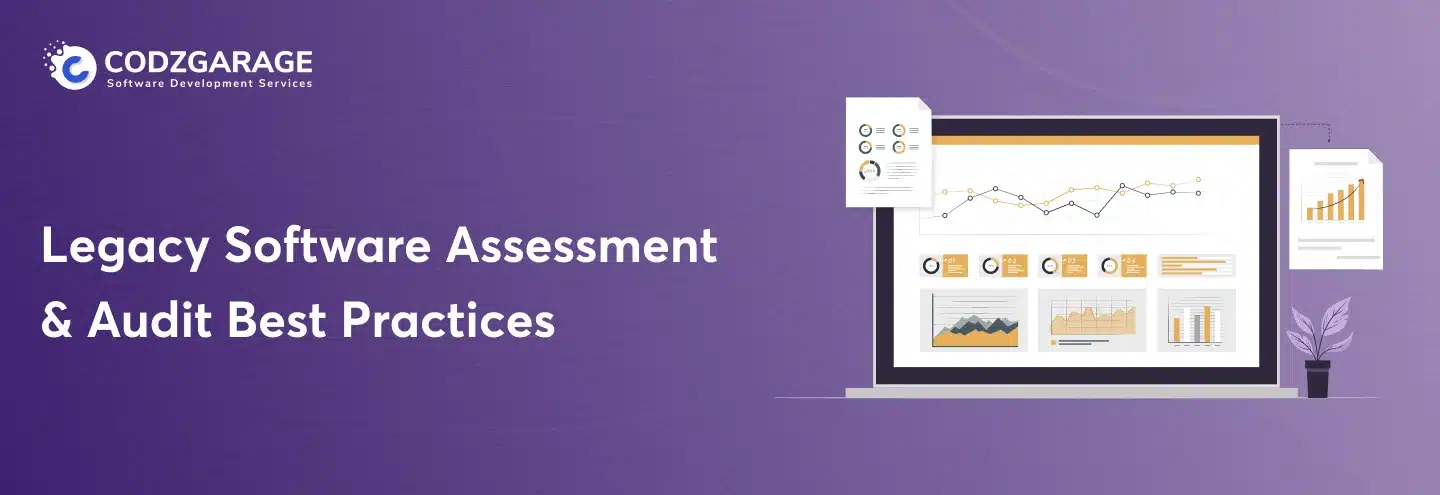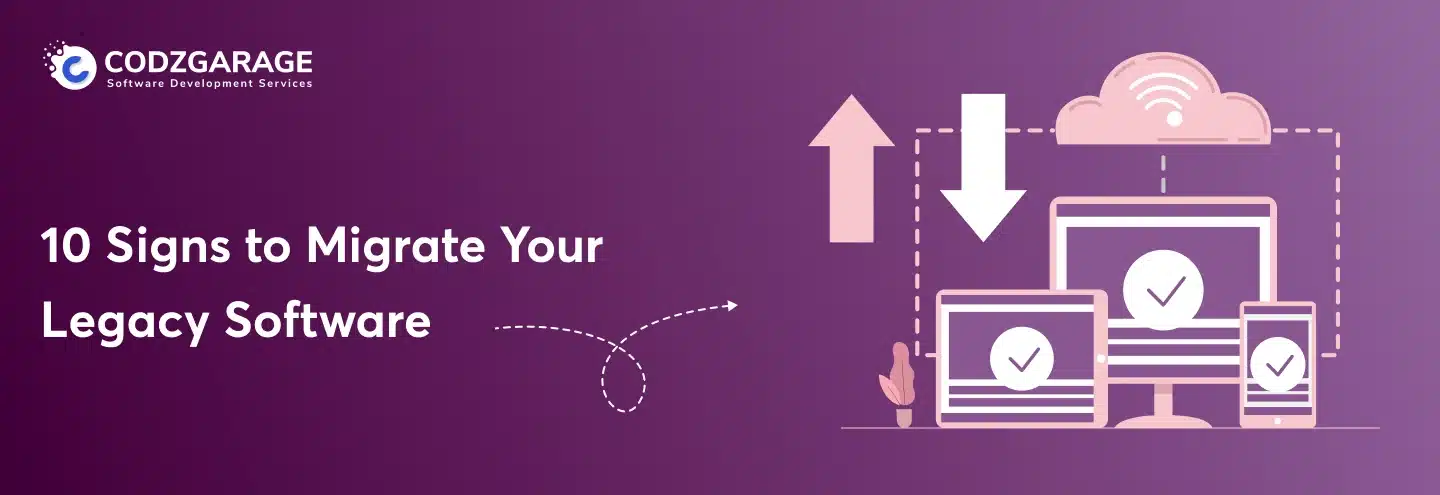How to Optimize Cost & Reduce Risk in Application Modernization
Application modernization involves many risks, which can cost you a small fortune. Let this guide navigate you through efficacious tips on optimizing cost and reducing risks on application modernization!
The question “How much does it cost to modernize a legacy system?” is more likely to come to your mind if you’re to modernize legacy applications. Since the cost isn’t fixed–as it can vary depending on multiple factors- this article will take you through a complete list of tips on reducing risk and optimizing cost on application modernization.
Codzgarge is an application modernization & legacy software migration agency providing high-end solutions for businesses from across the globe. Contact us today for a free quote!
As it consists of various activities, application modernization comes with plenty of risks and challenges, requiring a huge amount of resources. The process involves modernizing an application, database, operations, and the like of a legacy system, which needs excellent talent and effort. As a result, this skyrockets the project cost; hence, you need to have an effective approach to reduce them. This application modernization guide discusses every possible way to reduce risk and optimize cost on application modernization so that you can modernize your app without breaking the bank.
Let’s drill down!
What’s Application Modernization?/Application Modernization Strategy
Legacy application modernization, aka legacy software modernization, refers to the conversion, porting, or rewriting of legacy software to modern programming languages, architecture, software libraries, and the like. An application modernization strategy is an intensive plan followed by an organization heading toward modernizing its existing application that may have gone obsolete. The cause of getting obsolete for the software may be plenty, including the rapid advancement of technology and the like.
There are various approaches to software modernization, for instance, upgrading, re-architecting, and so on, to leverage innovative tech capabilities and get an app aligned with the current requirements. The emergence of new technologies, maintenance of legacy systems, cost optimization, user-experience enhancement, and the like can lead to legacy application modernization.
8 Approaches to Risk Reduction and Cost Optimization when Application Modernization
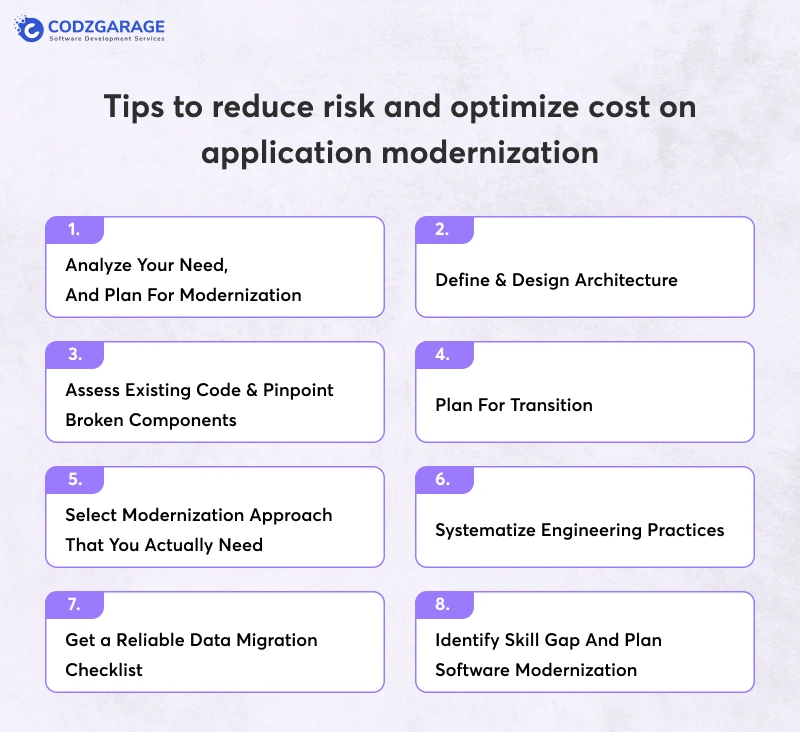
However, there are plenty of benefits of application modernization; it comes with a variety of risks involved and is likely to eat up hundreds and thousands of dollars if you don’t follow the right approach. Hence, you better employ legacy system modernization best practices to prevent your app modernization venture from costing you a small fortune. Let’s know how to reduce risk and optimize cost on application modernization!
Analyze Your Need, And Plan For Modernization
First off, you need to analyze your needs so that you can plan for modernization in a better way possible. When you analyze a legacy application system, you find its performance gaps and vulnerabilities; thereby, you get to know what to do to resolve them. So, conduct a proper assessment of the existing system and then plan for application modernization.
Define & Design Architecture
Defining architecture is essential and has a lot to do with your application modernization venture. In case you have a monolithic application architecture, you should identify its limitations and choose it as the first step to get started on software modernization. Selecting SOA, microservices, or modification to the monolithic architecture is the key decision when you’re to modernize your app.
After that, defining and designing the architecture you’ve selected comes into play. When you define requirements and design architecture, it becomes convenient to plan the modernization. It enables you to organize data migration, system maintenance as well as the transition phase. Doing so will contribute to reducing risk while lessening the cost of app modernization.
Assess Existing Code & Pinpoint Broken Components
Next up, consider an intensive analysis of existing code and find out obsolete and broken elements. When you extract the existing source code and analyze it for obsolete components, you tend to mitigate the risk of impact on new architecture.
You can take a security component or policy, for instance, which denies compliance with the cloud environment. When you have migrated it to the cloud, security policies will be different from what they were previously. Therefore, you need to find the policies that are competent to work in the new environment.
Plan For Transition
When you migrate an application to a new tech stack or architecture, it doesn’t mean you’re terminating the entire application, but it’s a kind of renovation. Hence, you need to maintain the legacy system and the new system with proper planning for transition. Here’s how to plan for the transition phase of application modernization!
- Lessen the risk of an overwhelmed system.
- Lower the expense associated with managing two systems synchronously.
- Consider managing resources for the transition phase.
- Reduce application downtime and increase availability.
- Enhance collaboration between teams via better management between legacy and new systems.
Select Modernization Approach That You Actually Need
Next up, choosing a modernization approach that suits your needs is crucial; hence, consider choosing it wisely. For that to be possible, let’s come to the point and discuss the software modernization approaches to choose from!
List & Shift
List and shift is considered to be one of the easiest ways for legacy application modernization. The very approach makes sense when you need to enhance the scalability of your application via cloud-based infrastructure. With lift & shift, the infrastructure and network resources get migrated to the cloud with no changes to the codebase.
Re-architecting
When you migrate your existing application following the re-architecting approach, you tend to change your application’s whole structure. For instance, if you migrate from a monolithic application to microservices, you separate the system design into various service clusters. Separating a monolithic application into clusters of services assists you to improve scalability, flexibility while skyrocketing the time to market.
Refactoring
Refactoring is the next approach to application modernization which tends to make small changes to an application’s structure without affecting its functionalities. Many organizations make use of the refactoring modernization approach to integrate public cloud storage. The key purpose for refactoring an application is making small changes for cumulative effects on an application’s performance without altering the system’s behavior.
Rebuilding
Next up, you can choose the rebuilding approach to software modernization if you need to revamp an existing application completely. Rebuilding is an approach in which you create an application right from scratch. For instance, rather than just migrating a few components, you can choose to rebuild a cloud-native application for massive changes.
Replacement
The next approach to software modernization is “replacement.” With this approach, you can replace the components of your existing application with a new one employing innovative technologies. For instance, you can replace an existing application with an open-source alternative and support microservices architecture.
Get a Reliable Data Migration Checklist
Data migration has a larger role to play when it comes to application modernization. It becomes even more important when you’re moving to the cloud. In case you fail to plan it properly, you may face issues with data security leakages and end up spending recovery costs. Follow the data migration checklists given below:
- Conduct a proper resources assessment to ascertain how much time, cost, and workforce you need for data migration.
- Analyze the critical systems and data in the application and then plan for the app modernization accordingly.
- Consider establishing data rules and make sure assurance via information quality assessment.
- Replace legacy and obsolete systems when required.
- Implement security policies as per source, data type, and target environment.
- Make use of orchestration for optimized virtualization.
Utilizing container orchestration enables you to implement microservices at scale without complications caused by resource management. It mitigates manual deployment and makes container scaling way more convenient. Docker, Swarm, Kubernetes, and many others are container orchestration tools that you can make use of to serve your purposes. Apart from that, you can find some Docker desktop alternatives, too.
Identify Skill Gap And Plan Software Modernization
Application modernization consists of various requirements such as designing, changes in architecture and technology, and the like. To perform these activities, you need to have a workforce with a variety of skills and competencies. In order to fix the skill gap, you need to explore ways to find the right software migration service provider.
For instance, if you’re to implement microservices architecture, conduct a proper assessment to gauge the number of developers, quality analysts, and software architects you need. Once you’ve done that, consider ascertaining the cost of hiring these talents so that you can find the right one. While a software architect costs you around $128,970 per year, a QA engineer is likely to cost anywhere around $90,682 a year. If you want to build an in-house software development team, the cost may go above that.
Final Thoughts:
That’s all there’s to it! Heading to application modernization is like moving toward opening Pandora’s box. Although application modernization makes a huge difference in how a business operates, it also brings along a variety of risks and challenges. The more complications and risks involved in a project, the more it’s likely to cost you on modernization.
We suggested 8 tips following which you can optimize cost and reduce risks on application modernization. When implemented in the right way, these effective tips will help you a lot in risk reduction and cost optimization. If you’re on the verge of legacy application modernization and need assistance, get in touch with us, our accomplished engineers will help you all the way when application modernization.
Want
Consultation?- 11+ of experience
- 80+ projects
- Delivery on time




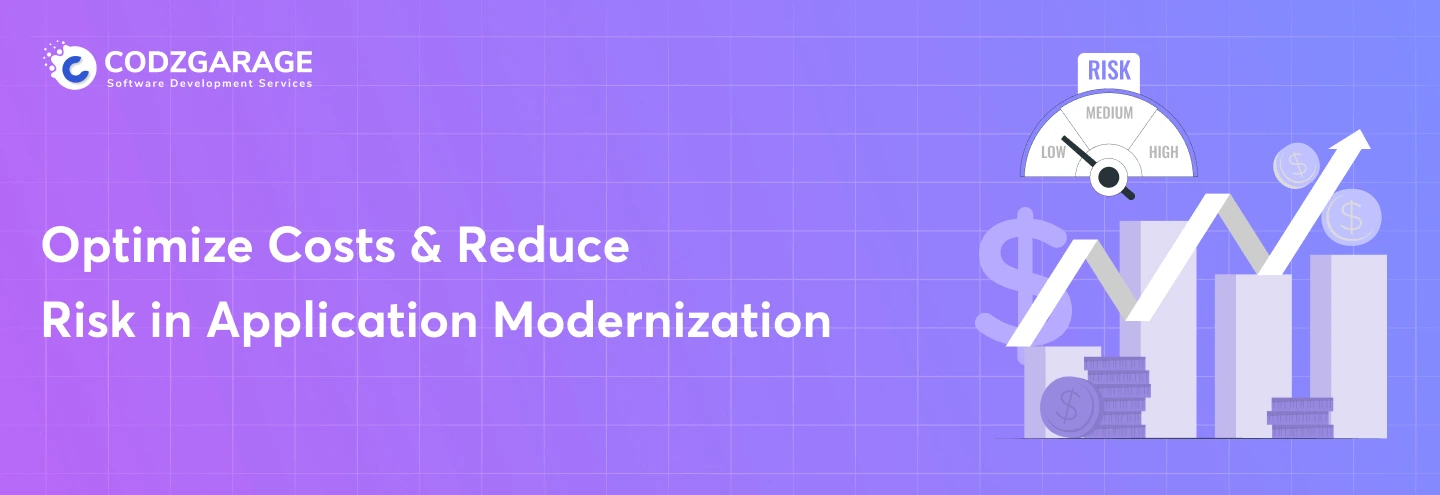

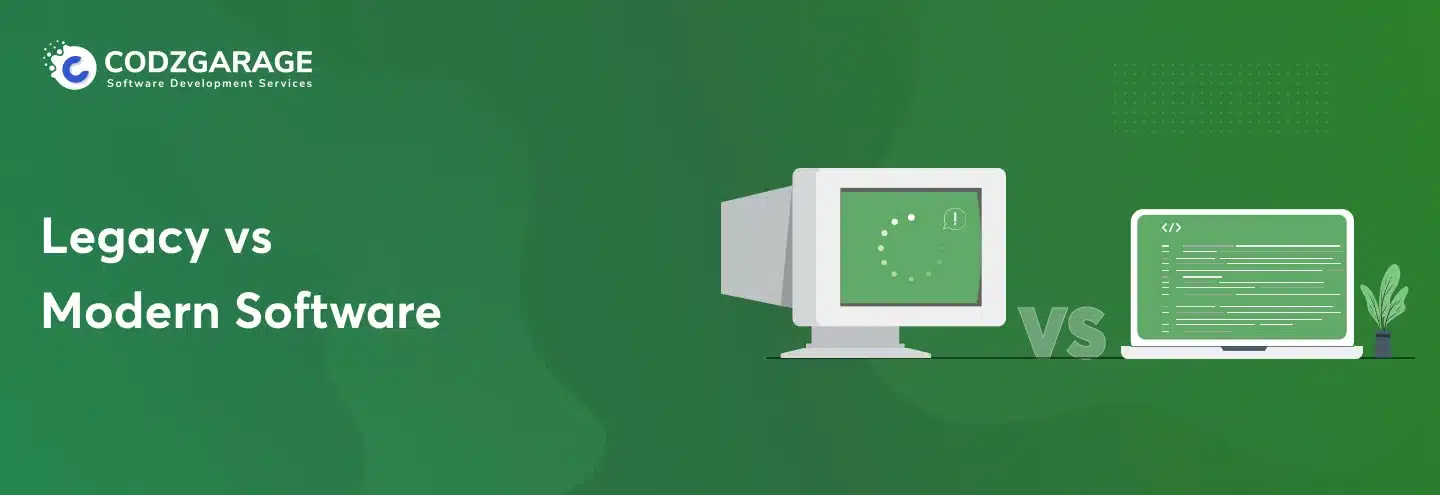
 Paresh Kapuriya
Paresh Kapuriya 